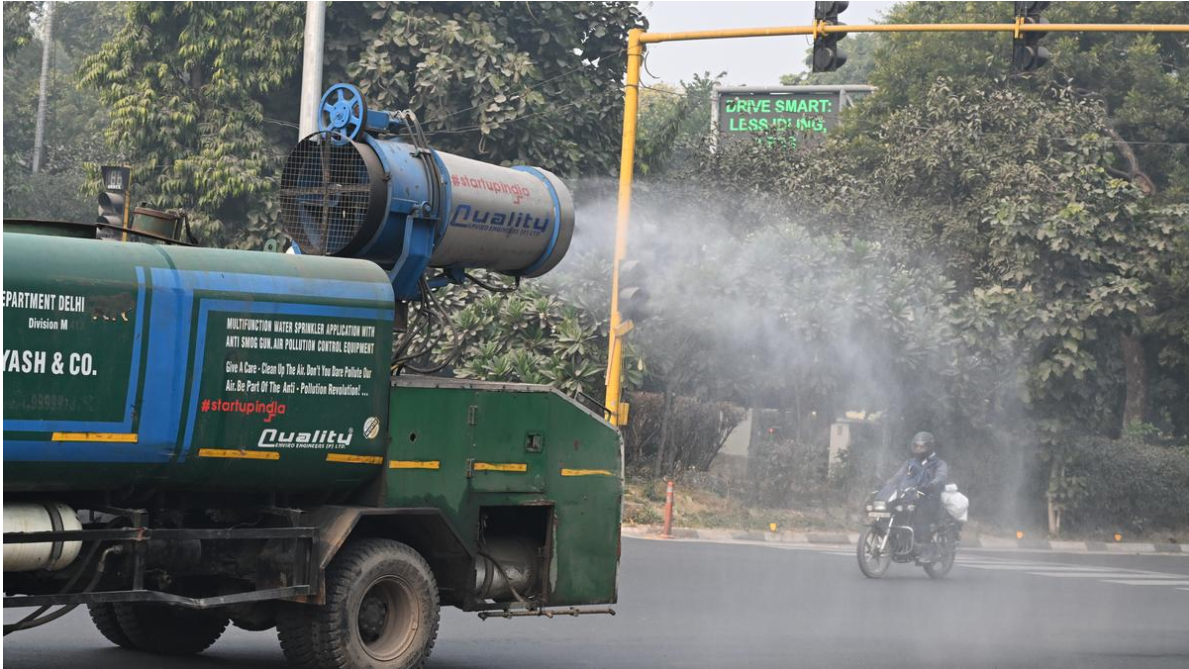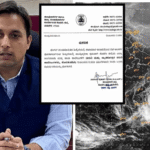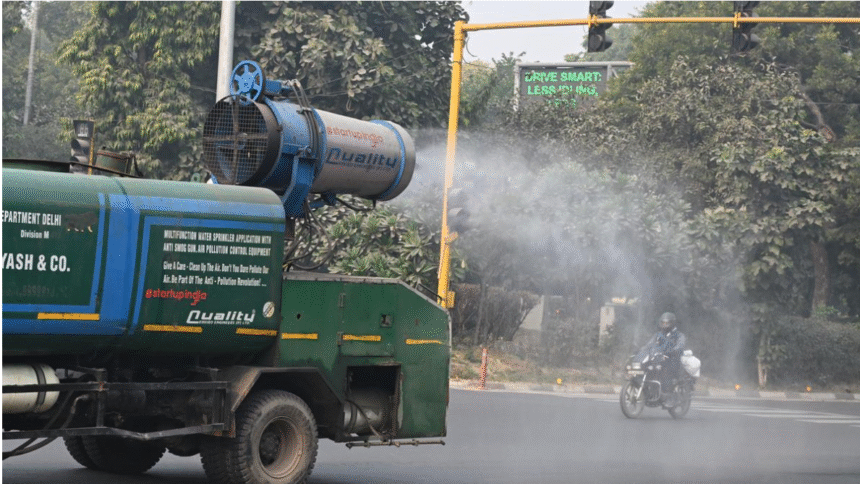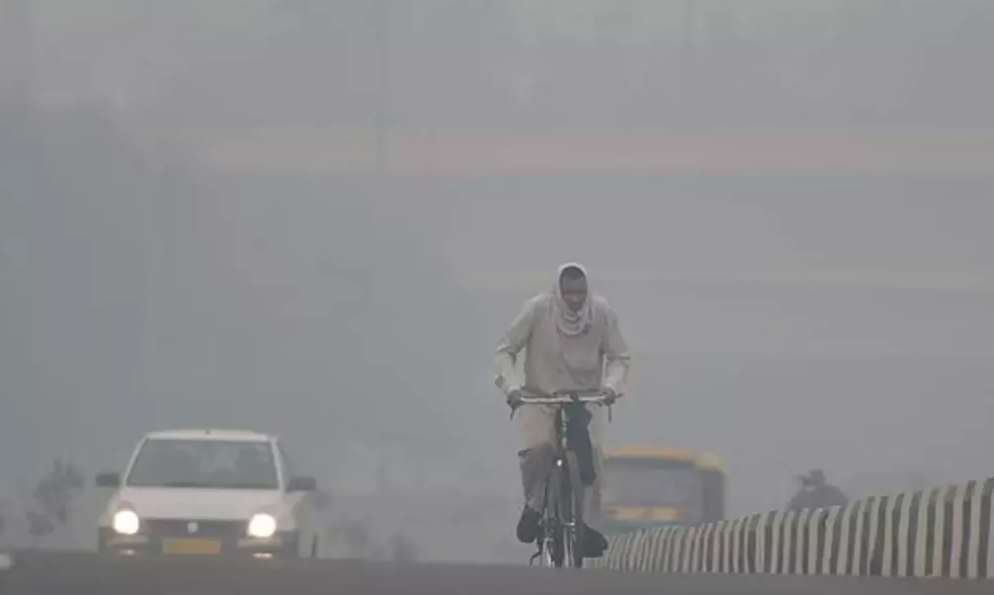1. Introduction: Delhi’s Air Crisis and Underutilized Resources
NCAP Funds to Fight Air Pollution Delhi, India’s capital, has long battled the dubious distinction of being among the world’s most polluted cities. Each winter, its residents brace themselves for the deadly smog, and yet year after year, the problem persists with only minimal improvements. A recent revelation has further shocked policymakers and citizens alike: Delhi has spent only about one-third of the funds allocated under the National Clean Air Programme (NCAP) to combat air pollution.
This article delves into how much Delhi received, how much it spent, where the gaps lie, and what it means for the city’s fight against pollution. We will also look into broader implications across other Indian cities, policy inefficiencies, and the way forward.
2. What is NCAP? A Brief Overview
The National Clean Air Programme (NCAP) was launched by the Ministry of Environment, Forest and Climate Change (MoEFCC) in January 2019. Its objective is to reduce PM2.5 and PM10 concentrations by 20–30% by 2024 (compared to 2017 levels) in non-attainment cities—those that consistently fail to meet the prescribed air quality standards.
Key features of NCAP include:
-
City-specific action plans
-
Sectoral interventions (transport, construction, industry, etc.)
-
Capacity building of pollution control boards
-
Installation of air quality monitoring systems
-
Public awareness campaigns
Delhi, as a non-attainment city, NCAP Funds to Fight Air Pollution was naturally one of the primary recipients of funds under this scheme.
3. How Much Did Delhi Receive and Spend? The Startling Figures
According to data recently shared by the Ministry of Environment in Parliament, NCAP Funds to Fight Air Pollution Delhi has utilized only 33% of the total funds allocated under the NCAP.
Breakdown of the numbers:
-
Total funds allocated (till 2023): ₹52 crore (approx)
-
Funds spent by Delhi government: ₹17 crore (approx)
This means nearly ₹35 crore of funds remain unutilized despite the city grappling with life-threatening air pollution.
4. Where Was the Money Supposed to Go?
Under the NCAP, funds are allocated for:
-
Setting up Continuous Ambient Air Quality Monitoring Stations (CAAQMS)
-
Dust control units and mechanized road sweepers
-
Anti-smog guns and water sprinklers
-
Public transport and electric vehicle promotion
-
Awareness campaigns
-
Strengthening of Pollution Control Committees
However, Delhi’s delay in execution has meant that several planned interventions either remain pending or have not been rolled out at the scale envisioned.
5. Why Is the Fund Utilization So Low?
Several reasons have been cited by government sources, NCAP Funds to Fight Air Pollution watchdog agencies, and policy researchers:
a. Bureaucratic Red Tape
Implementation involves multiple agencies—Delhi Pollution Control Committee (DPCC), MCD, PWD, Transport Department, NCAP Funds to Fight Air Pollution and more. Coordination issues among them have led to delay in fund disbursal and project rollout.
b. Lack of Project Proposals
In many cases, the funds remained unspent simply because no viable projects were submitted for approval. In other cases, NCAP Funds to Fight Air Pollution approved projects were not implemented due to administrative hurdles.
c. Political Turf Wars
The Delhi government and the Centre have been in frequent conflict over administrative powers. This political friction has affected timely fund utilization.
d. Inadequate Manpower
The DPCC and associated bodies often suffer from staff shortages and capacity issues, NCAP Funds to Fight Air Pollution which delay project implementation.
Accept Mediation: PM Modi to U.S. President Trump on India-Pakistan Issuewhich delay project implementation.  watch video for more info
watch video for more info
-
6. Impact on Delhi’s Air Quality: Numbers Don’t Lie
Delhi’s air quality, while showing minor seasonal improvements, continues to remain hazardous, NCAP Funds to Fight Air Pollutionparticularly in winter.
Air Quality Index (AQI) Trends:
-
2020 Winter (October–December average): AQI ~ 360 (Severe)
-
2021 Winter: AQI ~ 350 (Severe)
-
2022 Winter: AQI ~ 329 (Very Poor)
-
2023 Winter: AQI ~ 340 (Severe)
Despite crores sanctioned for mitigation, the air quality has not improved at the scale expected, NCA P Funds to Fight Air Pollution reinforcing the importance of timely and effective fund utilization.
7. Comparison with Other Cities: Is Delhi an Outlier?
Interestingly, NCAP Funds to Fight Air Pollution Delhi is not alone in underutilizing NCAP funds. Other major cities have also faced similar criticism:
-
Mumbai spent around 50% of its allocated funds.
-
Kolkata utilized only 40%.
-
Lucknow, Kanpur, and Agra reportedly used less than 30% of their allocations.
However, the stakes are significantly higher in Delhi due to its consistently toxic air and large population.
8. Public Health Crisis: The Human Cost of Inaction
Delhi’s pollution crisis is not just an environmental issue—it’s a public health emergency. Every year:
-
Respiratory illnesses rise by 30–40% in winter months.
-
Cases of asthma, bronchitis, and cardiovascular issues spike among children and the elderly.
-
A 2020 study by the Lancet found pollution contributed to 17,000 premature deaths in Delhi alone that year.
Unspent funds represent a lost opportunity to prevent suffering and save lives.
9. Citizens Speak: Anger, Frustration, and Activism
Delhiites are increasingly vocal about the inaction. RWAs (Resident Welfare Associations), NCAP Funds to Fight Air Pollution environmental activists, and parent groups are:
-
Demanding accountability from the government and civic agencies.
-
Filing RTIs and PILs to track fund usage.
-
Holding air quality walks and workshops to raise awareness.
Social media campaigns under hashtags like #SaveDelhiAir and #CleanAirNow are gaining traction, NCAP Funds to Fight Air Pollution reflecting the growing public impatience.
10. Policy Experts React: A Wake-Up Call
Environmentalists and policy experts have slammed the underutilization.
Dr. Sunita Narain, Director of Centre for Science and Environment (CSE), NCAP Funds to Fight Air Pollution said:
“It is criminal negligence when resources are available but not used. Every unspent rupee is a child coughing on Delhi’s roads.”
She recommended:
-
Independent audits of all NCAP fund usage
-
Stronger inter-agency coordination
-
Public disclosure portals showing fund flow and project status
-
11. Government Response: Promises and Plans
In response to the uproar, the Delhi government has promised:
-
Accelerated use of remaining funds
-
A new round of project proposals focused on EV infrastructure, NCAP Funds to Fight Air Pollution real-time monitoring, and road dust control
-
Coordination meetings among departments to remove bureaucratic delays
The Environment Ministry has also warned all states and UTs that future funding under NCAP will be performance-linked, meaning poor fund utilization may lead to fund cuts.
12. Role of the Judiciary: Courts Step In
The Supreme Court and National Green Tribunal (NGT) have previously intervened in Delhi’s pollution battle. With the latest data out, legal experts anticipate:
-
Court-monitored fund usage to ensure transparency
-
Directives to fast-track pending pollution control projects
-
Possible penalties for inaction
The NGT has already asked for a detailed status report from Delhi and other NCR cities.
13. International Lessons: What Delhi Can Learn
Cities around the world have faced pollution and responded with decisive action:
-
Beijing reduced PM2.5 levels by 40% in 5 years using strict enforcement and efficient fund deployment.
-
London introduced an ultra-low emissions zone (ULEZ) with real-time tracking and targeted subsidies.
Delhi must learn from these models—not just in policy design, but in execution and accountability.
14. The Way Forward: How to Make NCAP Work
To ensure better outcomes from the NCAP in Delhi, the following steps are essential:
a. Independent Oversight
Constitute a multi-stakeholder committee with citizens, scientists, NCAP Funds to Fight Air Pollution and NGOs to monitor fund usage.
b. Transparency Portals
Set up a real-time dashboard showing funds received, allocated, spent, and project status.
c. Capacity Building
Invest in training and staffing pollution control boards and agencies involved in implementation.
d. Political Consensus
Ensure cooperation across political parties and governments for smooth execution.
e. Community Participation
Empower RWAs and local communities to run hyperlocal campaigns on air pollution.
15. Conclusion: Money Alone Can’t Buy Clean Air
Delhi’s failure to utilize even one-third of its NCAP funds reflects a deeper governance crisis—a lack of political will, administrative inefficiency, and poor inter-departmental coordination.
Clean air is not a luxury. It is a fundamental right. With funds already allocated, NCAP Funds to Fight Air Pollution the onus now lies on authorities to act decisively. Every rupee spent wisely could mean cleaner lungs, fewer hospital admissions, and a better quality of life for millions. ALSO READ:-President Trump India Never Has, Never Will Accept Mediation: PM Modi to U.S. President Trump on India-Pakistan Issue







Добавил в избранное, люблю ваш проект!